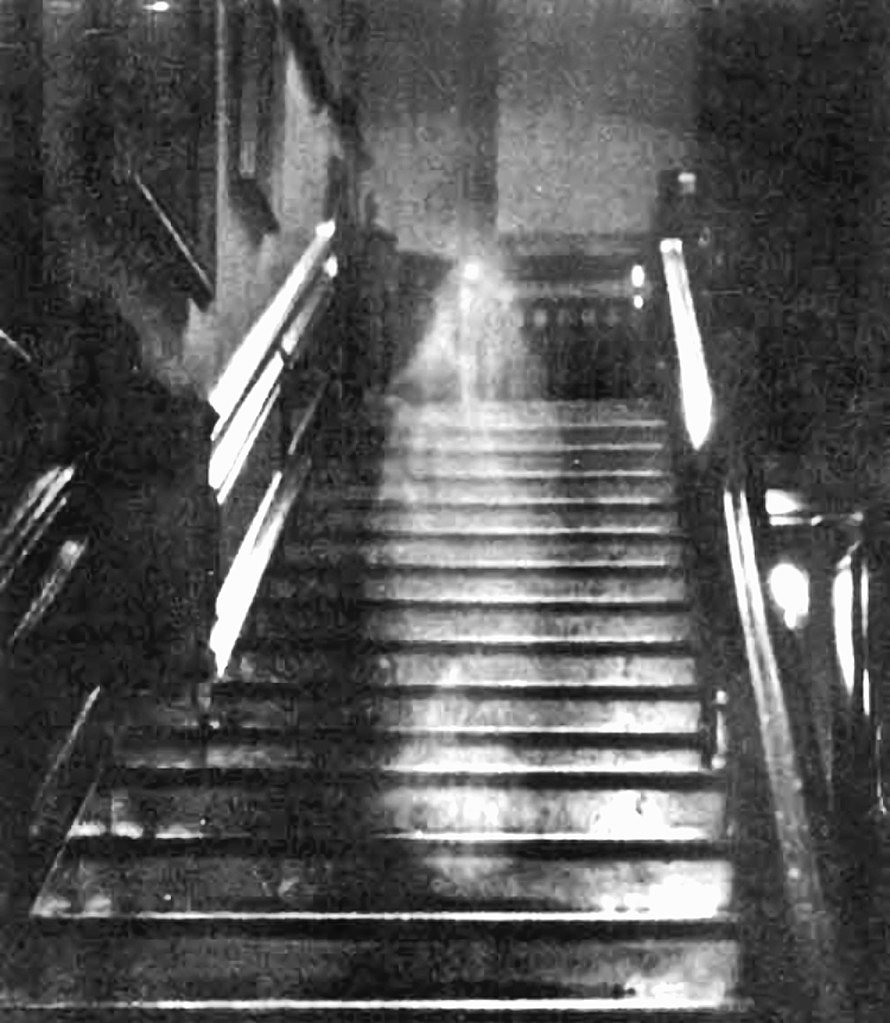
With Halloween approaching, I thought it might be interesting to look at the rise of the ghost story in Georgian England. The nineteenth century marked the summit of popular interest in ghosts and spirits, thanks to the advent of photography. The prevalence of double exposures as a means of faking ghostly images fuelled the craze. However, the interest in reports of ghosts began earlier, as better printing methods helped produce pictures with more detail and the ability to show ghosts as transparent.
Hoaxes
The intelligentsia of the time, affected by Enlightenment thought, naturally ridiculed the whole idea of visitors from beyond the grave. Their scepticism was vindicated by several notorious cases of deception, perhaps the most famous being the Cock Lane Ghost in 1762. In 1759, a widower called William Kent, along with his sister-in-law Fanny Lynes, now his mistress, rented a room in Cock Lane. They moved out when their landlord borrowed money from Kent, then failed to repay it. Not very long afterwards, Fanny Lynes seemingly fell victim to smallpox and died.
Three years later, in 1762, the landlord, Richard Parsons, claimed he and his 12-year-old daughter, Elizabeth, said the ghost of Lynes was haunting the house in Cock Lane. The ghost both scratched at the furniture, earning it the nickname of “Scratching Fanny”, and proclaimed that William Kent had caused her death by poisoning her with arsenic.
The case caused a public sensation. Seances were held to communicate with the ghost and even Dr Johnson got involved in efforts to find out what was going on. It was soon established that the events were part of a hoax, in which Elizabeth Parsons played the part of the wandering spirit. Her father was pilloried and gaoled as a result. As Dr Johnson himself said later:
“It is wonderful that 5,000 years have now elapsed since the creation of the world, and still it is undecided whether or not there has ever been an instance of the spirit of any person appearing after death. All argument is against it; but all belief is for it.”
Useful Spirits
Despite all the scorn from educated persons, some of the most famous of them were not averse to using ghosts for their own purposes. Horace Walpole’s “blockbuster” book, “The Castle of Otranto”, makes heavy use of haunted corridors and characters who step out of portraits on the wall — just as Gilbert and Sullivan’s comic opera “Ruddigore” did in the nineteenth century.
Criminals soon latched onto the possibilities made available to them by belief in ghosts. Highway robbers covered themselves with white sheets to frighten their victims into handing over their valuables. Thieves pretended to be ghostly apparitions to make people run from their houses, leaving them free to take whatever they wanted.
You might have imagined that religious people and the clergy would vigorously deny the existence of ghosts and spirits. After all, belief in spirits was only a short step away from paganism. Many protestant clergy did, either dismissing ghosts altogether as imaginary or branding them “Catholic superstitions”. However, others amongst the nonconformists and evangelicals were more equivocal in their statements, perhaps wanting to bolster belief in the supernatural as a way of discrediting the atheism stemming from the French Revolution.
Norfolk Ghosts
Belief in ghosts and their kin was also fanned by the printers of pamphlets. Sensations sold more copies; a fact not lost on today’s tabloids. Even the National Trust has a website which uses ghost stories to encourage visitors to its properties. In Norfolk, the ghost of Anne Boleyn, second wife of King Henry VIII, is said to reappear at Blickling Hall on the anniversary of her execution. The 18th-century squire of Felbrigg Hall , William Windham III, who died after being injured in a fire in 1809, is said to visit his magnificent library to keep an eye on his beloved books. Several staff members and volunteers claim to have seen him seated at the library table, or relaxing in one of the chairs, while reading a book.
A story from Potter Heigham in the Norfolk Broads relates how a love potion was used by an 18th-century noblewoman to snare a wealthy husband. Lady Carew obtained a potion from a local witch to persuade a wealthy bachelor, Sir Godfrey Haslitt of Bastwick, to marry her daughter Evelyn. Messing with witchcraft soon brought its inevitable reward, when, at midnight on the day of her wedding, a ghostly skeleton seized the new bride and dragged her into a coach drawn by four black horses. The coach then sped off, pursued by some of the wedding guests. Sadly, when the coach reached the bridge at Potter Heigham, it burst into flames and plunged into the water, carrying the bride with it. Repetitions of this event were supposedly seen by many over the years, and some claim the sound of ghostly horses’ hooves and the screech of wheels can still be heard at the bridge at midnight every May 31st.
Norfolk is, of course, also the home of Black Shuck, a huge, black demonic spectral hound, which is said to wander along paths close to the coast to carry unwary travellers off to hell. It was that tale which is known to have inspired Conan Doyle to write the tale of “The Hound of the Baskervilles”. In reality, it seems most likely that stories of Black Shuck were spread about by smugglers to dissuade people from intruding on their nocturnal activities.